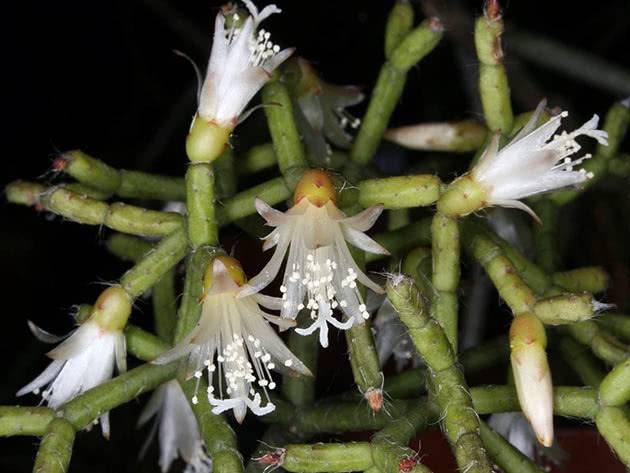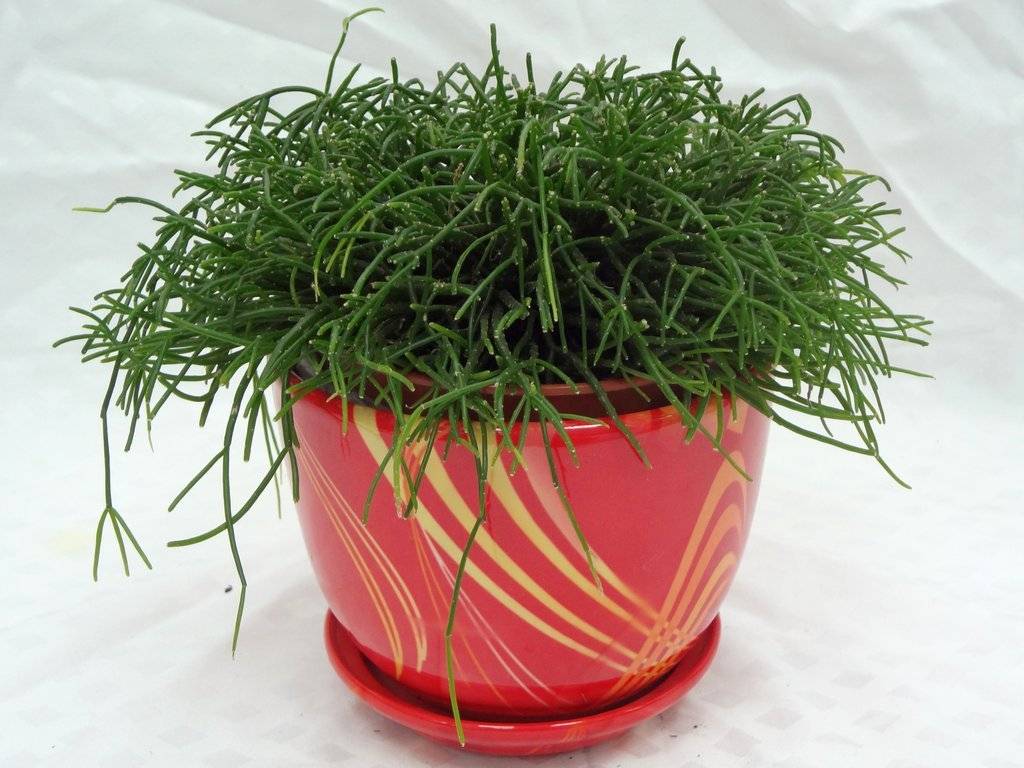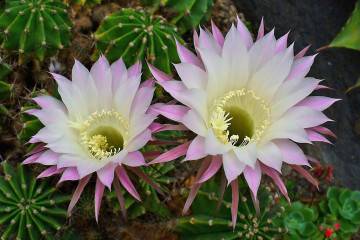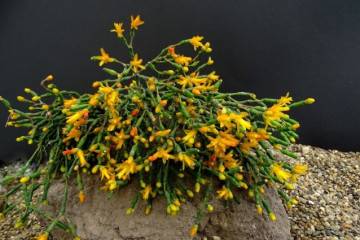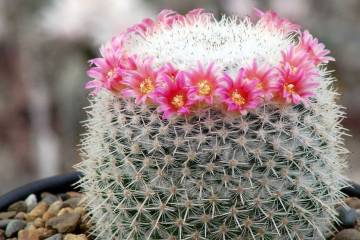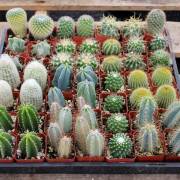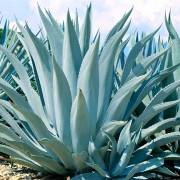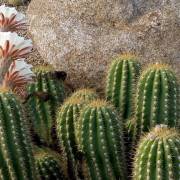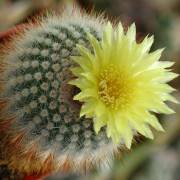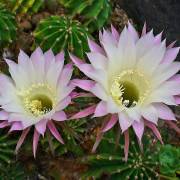Ripsalis cassuta - home care
Content:
The plant Ripsalis Kassuta is also called a twig. The unusual appearance of the crown and the beautiful flowering have won the collector's interest around the world for the representative of the cactus family.
What does it look like, which family it belongs to
The ivy-like trumpet cactus is not at all like a typical representative of this rich family. Rhipsalis cassutha is an epiphytic dwarf shrub. The crown of Ripsalis barnacle consists of lush and numerous soft, green, juicy shoots. Each branch is a series of rounded segments (leaves), the length of which depends on the age and growing conditions.
Several new segments grow from each branch at once. The total length of shoots usually does not exceed 65-95 cm. The formation of numerous aerial roots at the joints is typical for the species. Although the plant belongs to cacti, not all of its varieties have thorns. The fruit is a berry that resembles a gooseberry.
Briefly about the history of appearance
The name was given by Michel Adanson, a famous French naturalist and traveler in 1763. Ripsalis was included in international catalogs in 1788. The differences between Ripsalis and Hatior are minimal, so they are often confused.
Homeland of the plant
You can meet the plant in its natural habitat in tropical forests. The first samples were taken from the humid, rocky regions of South and North America.
Ripsalis - home care
In indoor conditions, it is not difficult to grow it in a hanging pot, as well as to care for it.
Temperature
A mode from +16 ° С to +35 ° С is suitable, but it is most comfortable at + 20-24 ° С.
Lighting
East and north windows are suitable, diffused lighting, since direct sun can cause burns. But keeping the pot in the back of the room without the sun is not worth it, the decorativeness of the plant will suffer.
Watering
Watering is necessary only after the substrate dries out, since the Ripsalis cactus does not tolerate the bay.
Spraying
In summer, you need to spray twice a day in the morning and evening.
Humidity
More than soil moisture, high air humidity is important - above 60%.
Priming
It is necessary to add peat, sphagnum and charcoal to the soil for succulents.
When and how it blooms
In indoor conditions, when creating a favorable environment in summer and winter, you can achieve a lush flowering of ripsalis.
Types of flowers
All flowers on a plant are the same in appearance. The buds form in the areoles or between the lobes.
Flower shapes
Narrow small petals in several rows are gathered in a corolla, a bit like a bell. Elongated stamens are located in the center. The color of the petals is: white, pink, yellow, red.
Ripsalis - care during flowering
In its natural habitat, flowering usually lasts from October to January. In indoor conditions in the northern hemisphere, buds can appear in the spring and summer.
Pruning
Long shoots can be shortened as needed. The most suitable time for this is early spring.
Reproduction methods
Old bushes can be easily propagated by simple division. The bush removed from the pot is cut into 2 or 3 parts, immediately planting in new containers.
Growing from seeds
Seeds obtained from ripsalis berries do not remain viable for long - up to 1 year. Sow them on top of the substrate and expect friendly shoots within 1 month.
Propagation by cuttings
Each of the shoot segments is an excellent planting material, which is immediately planted in a suitable soil and is expected to take root within no more than 1 month.
Transfer
Ripsalis bush should be transplanted into a new pot no more than 1 time per year, and old bushes are transplanted every 2-3 years. The container is needed wide and not deep, and the soil is needed for succulents, with the addition of sand and vermiculite for looseness.
Ripsalis kassuta: home care - possible problems in growing
Rarely enough, a plant is affected by pests common in homes.
Pests
In addition to spider mites and scale insects, whitefly and mealybugs can be found in the pot. Against them, they are treated with conventional insecticides by spraying.
Spider mites
Due to the preference for high humidity, the spider mite rarely appears on the ripsalis, but if it is detected, it should be treated with Fitoverm or Kleschevit.
Shields
This pest often infects young shoots. If characteristic brown spots are found, spraying with Aktara, Fitoverm should be carried out immediately, and after 5 days, be sure to repeat.
Other problems
Care should be taken to ensure that there is a minimum amount of nitrogen in the complex fertilizer that Ripsalis requires in spring and summer. With nitrogen fertilization, root decay occurs.
Ripsalis species
In addition to the common variety of Kassuth, Ripsalis can be: pilocarp, clavate, hairy, gnarled, etc. More exotic varieties: Cereuscula, Ripsalis mix, Pachiptera, Ripsalis elliptica.
Of all the cacti popular in room culture, the cactus is the least picky about care, it is boldly recommended for beginners. Flowering is the goal of the grower who has added this plant to his collection.

